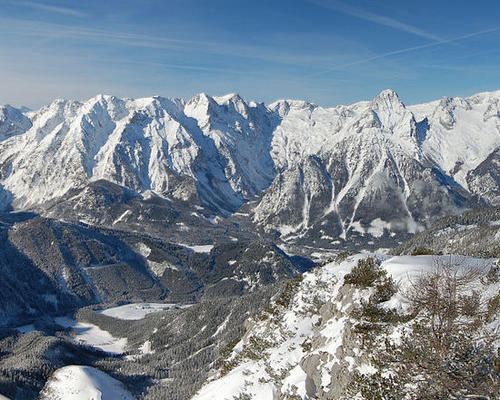Neodymium isotopy of Oligocene und Miocene Alpine sediments
Totes Gebirge, Styria
Image Credit: Herzi Pinki CC-BY-SA 3.0
Obtaining information about past tectonic or climatic changes from sedimentary deposits is a major goal of sedimentary provenance analysis. Foreland basins of mountains filled with erosional debris, e.g. in the Alps, can serve as archives of these changes.
The data
The data include geochemical analyses of the neodymium isotopy of the total rock clay fraction as well as neodymium samarium isotope ratios of sand-sized apatites. The samples are from drillings in the Oligocene/Miocene sediments of the Upper Austrian northern Alpine foreland basin.
Publication of the data set: Hülscher, J et al (2022) https://doi.org/10.3389/feart.2022.914409; Supplementary material (https://www.frontiersin.org/articles/10.3389/feart.2022.914409/full#SM1)
Research results
Distinguishing between a tectonically or climatically induced environmental signal solely on the basis of the induced change in the foreland is challenging because the signals can change during sediment transport from source to deposition. Furthermore, both causes can lead to very similar changes in the sedimentary record.
The combination of apatite and total rock clay fraction Nd isotope data shows that the provenance of the clayey fraction changes 4-5 million years later than that of the sand-sized apatites. The reasons for this delayed change lie in the properties of the methods used. Single-grain distributions can be dominated by geographically small areas with high erosion and mineral fertility rates. Whole-rock methods, on the other hand, integrate over the entire catchment, diluting extreme values. The combination of these two methods thus reveals spatial information that provides an unprecedented understanding of underlying environmental change.
Publication of the journal article: Hülscher, J et al (2022) https://doi.org/10.3389/feart.2022.914409
Texts modified after: Hülscher, J et al (2022) https://doi.org/10.3389/feart.2022.914409
